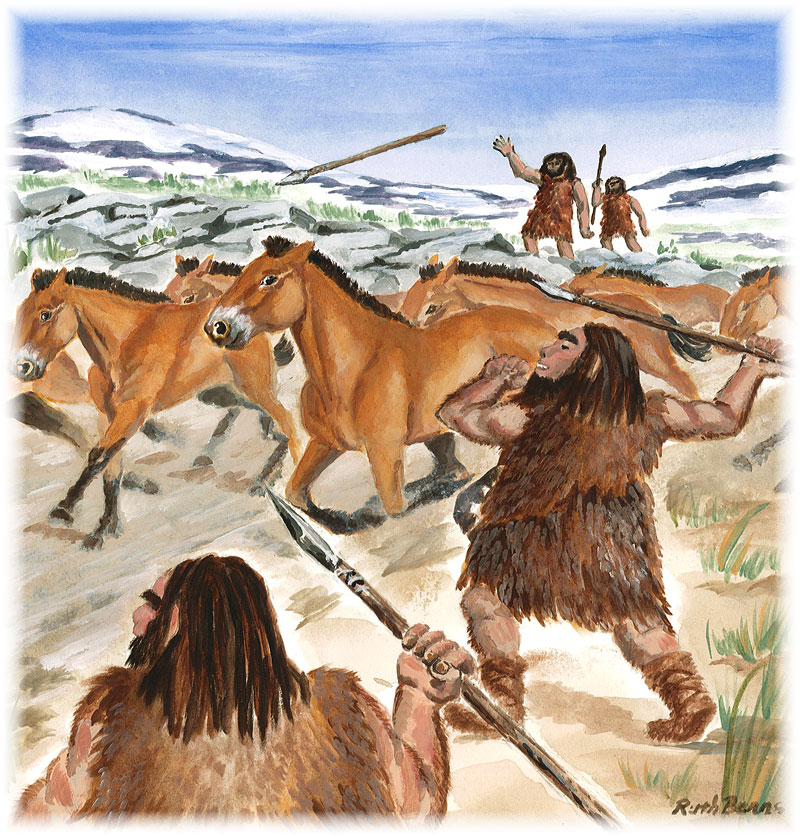 Humans hunted the horse for food
Humans hunted the horse for food  Humans hunted the horse for food
Humans hunted the horse for food During the Ice Age, also called the late Pleistocene, there would have been many horses found in what is now Siberia, Mongolia, China, Russia, Hungary, Italy, Germany, France, Spain and England. Fossil evidence in North America indicates that horses were found from Alaska to Mexico and from California to Florida. These horses were primarily grazers, and would have lived in open grasslands but many were also living on the forest steppes. They would have shared the Alaska landscape with woolly mammoths! They likely looked similar to the Przewalskii horses of today. They may have been most numerous in the Alaska area 10,000 to 15,000 years ago, but then disappeared.
Humans of the Ice Age hunted horses as an important source of food. It would have been very difficult to catch horses while on foot. Humans may have used rock piles and brush fire piles to herd horses into narrow areas that ended into “natural” corrals. Spears were used to kill the horses and then the meat may have been carried back to their camps or villages. Strips of horse meat would be smoked and dried over the fire and this meat would then keep for months. You can find “Beef Jerky” in the grocery store today, which has been dried in a similar manner from the meat of cattle. Many prehistoric campsites contain evidence that horse meat was a main food source